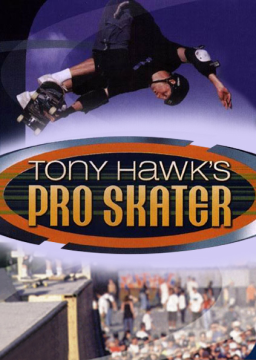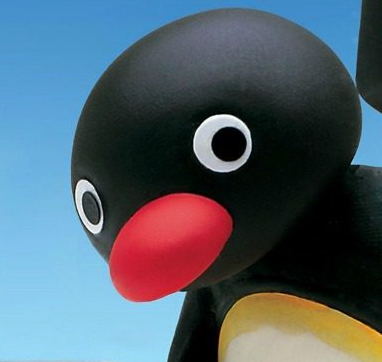This is an overview of knowledge and techniques in Tony Hawk’s Pro Skater 1 intended for speedrunners of the game.
Game Versions
Nintendo 64 Console
The N64 version of the game has the fastest loading times, making it the best for any% and 100%.
While not strictly necessary, this version allows spinning during frontflips and backflips with the analog stick.
The Expansion Pak enhances graphics but slows loading times, so the Jumper Pak (included with the original console) is better.
The 0% category uses a glitch exclusive to N64.
Neither NTSC version of the game (1.0 or 1.1/Rev A) has any advantage or significant difference over the other.
PlayStation/Dreamcast/NGage
The current record set by lemonademilk for the Roswell IL is on PlayStation, and the strat used is not possible on N64, since Bob’s Burntwist takes longer to end on N64.
Emulation
Joint’s IL record for Downhill Jam is an emulator run. Emu may be preferential for RTA IL runs due to having fewer lag frames.
Saving a replay for 0% is faster on emu, though level loading times may still make console faster.
Controls
Storage
Aka buffering tricks.
There is typically a 20-frame window to input a wallride before touching the wall.
A new trick can be input 3 frames after starting another, and the new one will instantly cancel the older trick as soon as it is possible to do so.
Config Glitch
On N64, it’s possible to bind multiple options to the same c-button, most notably to map both Jump/Ollie and Grindslide to c-down for simpler walljumps and grind hops. There are two main downsides: unintentionally grinding the end of a ramp instead of jumping, and needing to Ollie off rails when riding off and kicking without crouching would be better.
To set Jump/Ollie and Grindslide to c-down, in the Controls options:
Change c-left and c-down to Grindslide, then press A. On screen, C-up will automatically change to JumpOllie and c-down to Flip Trick. Change them back to Grindslide and press A again. This time, c-up and c-left automatically switch to say Flip Trick. Change them back to Grindslide one more time, hover the cursor over c-down then press A. All 3 should now say Grindslide, but in game c-up does nothing, c-left is Flip Trick, and c-down is both Jump/Ollie and Grindslide. C-right remains Grab Trick as normal.
Scoring
Multipliers
Increase scores quickly by doing multiple tricks in one jump, or by spinning in the air. Each trick or spin (each 180°=+0.5 multiplier) in a combo adds a multiplier to the final score you receive from that combo. Grinding resets this multiplier.
Point Staling
Each landing of the same trick in the same level decreases its base score.
First instance is 100% of base score, second is 90%, third 75%, fourth 50%, fifth and later instances 25%.
Nollie and Fastplant
Press up 10 frames or fewer before releasing JumpOllie to Nollie for 200 base points.
Press up twice before releasing JumpOllie to Fastplant for 250 base points. This window is 16 frames, but each input must be within 8 frames of each other.
Pressing another direction the frame before these up inputs or anytime before releasing Ollie will prevent the Nollie or Fastplant.
Fastplants give more height and consequently distance.
More importantly than the base points is a combo multiplier for either of these, and their animations can be instantly canceled into any trick.
Normals
Kickflip and heelflip are the fastest normals but score woefully low points (base 100 each).
The next fastest is 360 flip (base 300).
Madonna is the best normal trick to start runs off for building special due to its high score (base 525) and relatively fast speed. Benihana is 2 frames faster but a slightly lower score (base 420).
Since higher scoring normals like Varial are too long to perform from flatground, usually Fastplant Madonna is the best starting trick.
Specials
Score enough points to build the special meter. When it’s filled, it turns yellow, grants access to signature moves, and max speed is higher. It slowly depletes, but can constantly refill from gaining enough points.
Signature moves (aka specials) have high base points, and some can be held or spun. Each character has 3 signature tricks in their kit (except Tony who has a total of 4).
Note that while Kickflip McTwist can be spun with the analog stick on N64, this does not add multipliers like normal, whereas it does for Frontflip and Backflip.
Menu Tech
End Run
Hitting ‘End Run’ from a Pause in N64 stops the in-game timer, but play can continue as long as a combo is uninterrupted. For IL IGT runs, its best to use this to end the timer early where possible. Note that the level will end before landing, though, so no points from this final combo will count for the score.
Retry
When the level ends after choosing ‘End Run,’ an animation plays of the number of new tapes earned, then flavor text describing unlocked content. In a full game run, this is undesirable because these screens are slow.
It is faster to ‘Retry’ a level and then ‘End Run’ to skip both of these.
Soft Reset
Holding Z+Start on N64 for roughly 3.5 seconds soft resets the game. If timed properly, this is the fastest way to change levels in a run since it avoids waiting to reload the past level. There is a chance of the game crashing upon a soft reset.
End Competiton
Comps take the best of 2 heats. End Competition after the second heat to skip loading into a third one.
Unlike the other levels, it is not viable to Restart Competition or Soft Reset at the end of them, since a medal is not awarded until End Competition is chosen and Soft Resets during menus can cause glitches (see the 0% category for an example).
Score Canceling
The game takes time to add up the last combo score to the score total. It only counts total score for the purposes of awarding tapes before a Retry or Soft Reset. After End Run, the game waits to tick up the final combo score before progressing.
To avoid needing to wait for this counter in competitions or potentially missing a Pro Score tape elsewhere, start a new combo, ideally with Nollie or Fastplant. The previous combo score will instantly add on to the total score. End Run or Retry before landing to prevent waiting on it to add up.
Trick Tips and Score Display
Trick tips are totally unnecessary. Score Display On or Off is personal preference.
Speed and Misc Tech
Speed
In general, the score of a combo affects speed: The higher the score, the faster. Holds contribute towards this, but multipliers do not, and it only increments for each 100 points added. Also seems to have a point where the benefit maxes out.
Skate, land, or grind on a decline to speed up.
Skate, land, or grind on an incline to slow down.
Hold down with left or right to turn sharper.
Land tricks straight to maintain speed better.
Landing a special trick grants a temporary stat buff. This is usually more beneficial than a normal, even if the normal trick would be more points.
Grinds
Generally, land a grind to speed up, but lose speed gradually while grinding unless it’s downhill.
Approach a rail or ledge closer to parallel to grind faster.
Transitions and Rotations
Hold up before launching off a quarter pipe to transition over it.
Hold up or down in the air to rotate the skater’s model and change their collision detection. Use this to land flat, maintain better speed, and prevent bouncing.
Autokick Off
With Autokick Off, use Flip Trick (default c-left) on the ground to move.
Acceleration is better with this feature turned Off, and it prevents the normal natural speed decay on flat ground.
Wait til after holding Flip to hold Ollie or go slower. Adding Ollie while turning prevents this slowdown.
If the initial kick input is frame 1, there is acceleration on frames 22-26.
Also hold down kick during frames 6-10 to get additional acceleration during those frames.
Also hold down kick during frames 22-26 to add even more, effectively doubling the acceleration rate, although it maxes out after 3 of those frames.
Wallrides
There are 3 main factors that affect wallrides: speed, distance, and angle. More speed when you hit the wall means more momentum to translate upward. Spend less time on the wall before ollie’ing off for higher jumps as well. The closer to the wall before the Ollie, the higher the potential walljump. More perpendicular to the wall = higher and shorter walljump. More parallel = lower but farther jump.
Skater Choice
All skaters are viable, but Rune Glifberg is the best skater in the game.
He has the fastest speed stat (7 to start) at all points in the game, tied with the other two vert skaters, Tony and Bucky. Unlike them, he has the normal move 360 Flip which is much faster than their Front Foot Impossible. All 3 of these skaters have Kickflip McTwist as a special.
His signature move Christ Air (left right grab) is ridiculously fast (20 frames, faster than many normals and possible from flat ground), has a relatively high score even for a special (base 2100), and can be held and/or spun for extra points.
All the non-vert skaters have the faster but lower-scoring normals 360 Flip, Hardflip instead of Fingerflip, and Sex Change instead of Varial. They also special grinds, and either Frontflip or Backflip.
Bob has the next fastest speed after the 3 aforementioned vert skaters (6 to start).
Jamie, Geoff, and Andrew are next fastest (5 speed to start).
Kareem, Elissa, and Chad are tied as the slowest (4 speed to start).
Due to recent changes with Twitch's storage policy, Twitch video submissions are no longer allowed. Please use YouTube instead.









